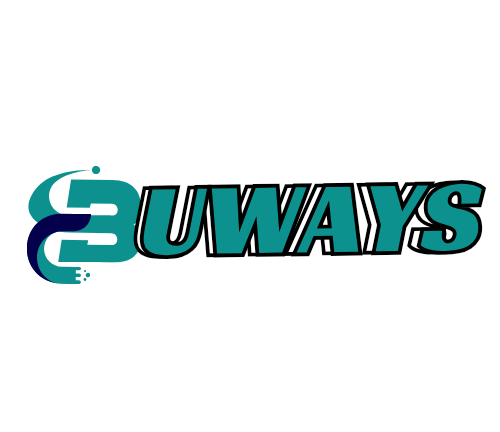In the digital age, the term “blog” has become synonymous with sharing ideas, experiences, and expertise. But what exactly is a blog? Simply put, it’s an online platform where individuals or groups express their thoughts on various subjects, engaging a worldwide audience. Whether it’s a personal diary, a niche-focused resource, or a bustling business hub, blogs manifest creativity and connect communities. Starting a blog today could be your gateway to countless opportunities—whether you seek to build a personal brand, drive business growth, or simply share your passions with the world. With endless potential for self-expression and knowledge-sharing, there’s never been a better time to dive in. So, if you’ve been contemplating starting a blog, let’s explore the fascinating world of blogging and unlock the reasons why you should jump in now. Join the conversation and leave your mark in the ever-evolving digital landscape!
Understanding the Concept of a Blog
A blog, short for “weblog,” is an online journal or informational website displaying information in reverse chronological order, with the latest posts appearing first. It is a platform where writers or even groups of writers share their views on an individual subject. Initially, blogs were more personal diaries, but they have evolved into influential platforms that disseminate information, foster communities, and influence public opinion. The central theme of a blog can range from personal experiences to professional advice, and anything in between. A blog’s content is often referred to as “posts,” and these can include text, images, videos, and links to other resources on the web.
The essence of a blog lies in its dynamic and interactive nature. Unlike traditional websites, blogs encourage reader engagement through comments and social media sharing. This interaction builds a community around the blog, fostering a sense of belonging among readers and creating a space for dialogue and exchange of ideas. Furthermore, blogs are often updated regularly, which keeps the content fresh and relevant, attracting repeat visitors who are interested in the latest posts. This regular updating is a key characteristic that sets blogs apart from static websites.
The versatility of blogs makes them suitable for a wide range of purposes. They can be used as personal diaries, professional portfolios, educational resources, or marketing tools. Businesses use blogs to connect with customers, share industry insights, and showcase their expertise. Individuals use blogs to express their creativity, share their life experiences, or advocate for causes they believe in. The flexibility and accessibility of blogging make it an ideal medium for anyone looking to share their voice with the world.
The Evolution of Blogging: A Brief History
Blogging has come a long way since its inception in the late 1990s. The first recognized blog is attributed to Justin Hall, who began personal blogging in 1994 while a student at Swarthmore College. These early blogs were more like personal diaries, maintained by individuals who wanted to share their thoughts and experiences with a small audience. The term “weblog” was coined by Jorn Barger in 1997, which was later shortened to “blog” by Peter Merholz in 1999. This was the beginning of the blogging revolution that would change the digital landscape forever.
The early 2000s saw the rise of blogging platforms such as Blogger and WordPress, which made it easier for people to start their own blogs without needing extensive technical knowledge. These platforms provided user-friendly interfaces and templates, lowering the barrier to entry and allowing more people to join the blogging community. As a result, blogging became more mainstream, with individuals and businesses recognizing its potential for communication and marketing. The introduction of social media in the mid-2000s further amplified the reach of blogs, allowing them to be shared and discussed more widely.
Today, blogging is a powerful medium that reaches millions of people worldwide. It has grown beyond personal diaries to include professional blogs, corporate blogs, and even microblogs like Twitter. The evolution of blogging has also led to the rise of new forms of content, such as vlogs (video blogs) and podcasts. Despite these changes, the core essence of blogging remains the same: sharing ideas and engaging with an audience. The history of blogging is a testament to the power of the written word and the human desire to connect and communicate.
Key Benefits of Starting a Blog
Starting a blog offers numerous benefits, both personal and professional. For individuals, blogging provides an outlet for self-expression and creativity. It allows you to share your thoughts, experiences, and passions with a global audience. This can be incredibly fulfilling, as it gives you a platform to voice your opinions and connect with like-minded individuals. Blogging can also be therapeutic, providing a space to reflect on your life and work through your thoughts and feelings.
From a professional standpoint, blogging can be a powerful tool for building your personal brand. By sharing your expertise and insights on a particular subject, you can establish yourself as an authority in your field. This can open up new career opportunities, such as speaking engagements, consulting gigs, or even book deals. Additionally, a well-maintained blog can serve as a portfolio of your work, showcasing your skills and knowledge to potential employers or clients. Many professionals have successfully used their blogs to advance their careers and grow their businesses.
Blogging also offers financial benefits. Many bloggers monetize their blogs through various methods, such as advertising, sponsored posts, affiliate marketing, and selling products or services. With dedication and hard work, it is possible to turn your blog into a profitable venture. Even if you don’t aim to make money from your blog, the skills you develop through blogging—such as writing, marketing, and SEO—can be valuable assets in today’s digital economy. Overall, blogging is a multifaceted activity that can enrich your life in many ways.
Different Types of Blogs: Which One is Right for You?
When starting a blog, one of the first decisions you’ll need to make is choosing the type of blog you want to create. There are several different types of blogs, each with its own focus and style. Personal blogs are perhaps the most common, where individuals share their thoughts, experiences, and daily life with their readers. These blogs can cover a wide range of topics, from travel and food to parenting and personal development. Personal blogs are often more informal and conversational, allowing the blogger to connect with readers on a more personal level.
Niche blogs, on the other hand, focus on a specific topic or industry. These blogs are written by individuals who have expertise or a strong interest in a particular subject, such as technology, fashion, health, or finance. Niche blogs are often more structured and informative, providing valuable insights and advice to their readers. By focusing on a specific topic, niche bloggers can build a loyal audience and establish themselves as authorities in their field. This can lead to opportunities for collaboration, sponsorship, and monetization.
Business blogs are another popular type of blog, used by companies to promote their products or services, share industry news, and engage with their customers. These blogs can help businesses build brand awareness, drive traffic to their website, and generate leads. Business blogs often feature a mix of content, including how-to guides, case studies, and thought leadership articles. In addition to these main types, there are also many other specialized blogs, such as travel blogs, food blogs, fashion blogs, and more. The key is to choose a type of blog that aligns with your interests and goals, and that you are passionate about maintaining.
Essential Elements of a Successful Blog
Creating a successful blog requires more than just writing posts and hitting the publish button. There are several essential elements that contribute to the success of a blog. First and foremost is high-quality content. Your blog posts should be well-written, informative, and engaging. This means conducting thorough research, providing valuable insights, and presenting your ideas in a clear and compelling manner. High-quality content not only attracts readers but also encourages them to share your posts and return for more.
Consistency is another crucial element of a successful blog. This means publishing new content on a regular schedule, whether it’s daily, weekly, or monthly. Consistency helps you build a loyal audience, as readers will know when to expect new posts. It also signals to search engines that your blog is active, which can improve your search rankings. To maintain consistency, it’s helpful to create a content calendar, plan your posts in advance, and set realistic goals for yourself.
Engagement is also key to a successful blog. This involves interacting with your readers through comments, social media, and email. Responding to comments and questions shows that you value your readers’ input and encourages them to participate in the conversation. Engaging with your audience also helps you build a community around your blog, which can lead to increased loyalty and word-of-mouth promotion. Additionally, promoting your blog on social media and other platforms can help you reach a wider audience and drive more traffic to your site.
How to Choose a Blogging Platform
Choosing the right blogging platform is an important decision that will affect your blogging experience and success. There are several factors to consider when selecting a platform, including ease of use, customization options, scalability, and cost. Some of the most popular blogging platforms include WordPress, Blogger, and Medium, each with its own strengths and weaknesses. WordPress, for example, is known for its flexibility and extensive customization options, making it a popular choice for both beginners and experienced bloggers.
Blogger, on the other hand, is a free and user-friendly platform that is ideal for beginners who want to start blogging quickly and easily. It offers basic customization options and integrates seamlessly with other Google services, such as Google Analytics and AdSense. However, it may not be the best choice for those who want more advanced features and control over their blog. Medium is another popular platform that focuses on simplicity and readability. It offers a clean and minimalist design, making it easy for bloggers to focus on writing and sharing their content. Medium also has a built-in audience, which can help you reach more readers without much effort.
When choosing a blogging platform, it’s important to consider your long-term goals and needs. If you plan to monetize your blog or require advanced features, a more customizable platform like WordPress may be the best choice. If you’re just starting out and want a simple and hassle-free experience, Blogger or Medium may be more suitable. Ultimately, the best platform for you will depend on your specific requirements and preferences, so take the time to explore your options and choose the one that best fits your needs.
Tips for Creating Engaging Blog Content
Creating engaging blog content is essential for attracting and retaining readers. One of the most important tips for creating engaging content is to know your audience. Understanding your readers’ interests, needs, and preferences will help you create content that resonates with them. Conducting audience research, such as surveys and social media listening, can provide valuable insights into what your readers are looking for. Once you know what your audience wants, you can tailor your content to meet their needs and keep them coming back for more.
Another key tip is to focus on storytelling. People are naturally drawn to stories, so incorporating storytelling elements into your blog posts can make them more engaging and memorable. This can involve sharing personal anecdotes, using vivid descriptions, and creating a narrative arc that keeps readers interested from start to finish. Additionally, using multimedia elements, such as images, videos, and infographics, can enhance your storytelling and make your content more visually appealing.
Finally, don’t forget the importance of headlines. Your headline is the first thing readers see, and it plays a crucial role in whether they decide to click on your post. A compelling headline should be clear, concise, and intriguing, giving readers a reason to want to learn more. Including keywords in your headline can also improve your search engine rankings and make your content more discoverable. By following these tips and consistently creating high-quality content, you can build an engaged audience and grow your blog’s reach and impact.
SEO Best Practices for Bloggers
Search engine optimization (SEO) is essential for increasing your blog’s visibility and attracting more organic traffic. One of the most important SEO best practices for bloggers is keyword research. Identifying the right keywords to target in your blog posts can help you rank higher in search engine results and reach a larger audience. Tools like Google Keyword Planner, Ahrefs, and SEMrush can help you find relevant keywords with high search volume and low competition. Once you’ve identified your target keywords, incorporate them naturally into your content, including your headlines, subheadings, and meta descriptions.
Another key SEO practice is optimizing your blog’s on-page elements. This includes using descriptive and keyword-rich URLs, adding alt text to your images, and ensuring your site is mobile-friendly. On-page optimization also involves improving your site’s loading speed, as slow-loading pages can negatively impact your search rankings and user experience. Tools like Google PageSpeed Insights and GTmetrix can help you identify and fix any issues that may be slowing down your site.
Building high-quality backlinks is also crucial for improving your blog’s SEO. Backlinks are links from other websites that point to your blog, and they signal to search engines that your content is valuable and authoritative. You can build backlinks by creating shareable content, guest posting on other blogs, and reaching out to influencers and industry experts. Additionally, regularly updating your content and keeping it fresh can help you maintain and improve your search rankings over time. By following these SEO best practices, you can increase your blog’s visibility and attract more readers to your site.
Monetizing Your Blog: Strategies to Generate Income
Monetizing your blog can be a rewarding way to turn your passion into profit. There are several strategies you can use to generate income from your blog. One of the most common methods is display advertising, where you earn money by displaying ads on your blog. This can be done through ad networks like Google AdSense, which automatically places relevant ads on your site and pays you based on the number of clicks or impressions. While display advertising can be a passive income source, it typically requires a large amount of traffic to be highly profitable.
Affiliate marketing is another popular monetization strategy. This involves promoting products or services on your blog and earning a commission for each sale made through your affiliate links. To be successful with affiliate marketing, it’s important to choose products that are relevant to your audience and provide genuine value. Writing in-depth reviews, creating tutorials, and sharing personal experiences with the products can help you build trust with your readers and increase your affiliate sales. Many bloggers find affiliate marketing to be a lucrative way to monetize their content without compromising their authenticity.
Selling products or services is another effective way to monetize your blog. This can include digital products, such as ebooks, online courses, and printables, as well as physical products, like merchandise or handmade goods. If you have expertise in a particular area, you can also offer consulting or coaching services to your readers. Additionally, sponsored posts and brand collaborations can provide a steady income stream. By partnering with brands that align with your blog’s niche and values, you can create sponsored content that resonates with your audience and provides value to both parties.
Conclusion: Taking the First Step Towards Blogging Success
Starting a blog can be a transformative experience, opening up new opportunities for self-expression, personal growth, and financial success. Whether you’re looking to share your passions, build your personal brand, or grow a business, blogging offers a versatile platform to achieve your goals. The key to blogging success lies in understanding your audience, creating high-quality content, and consistently engaging with your readers. By following the tips and strategies outlined in this article, you can set yourself up for success and make a meaningful impact in the digital landscape.
The journey of blogging is filled with learning and growth. As you develop your blog, you’ll gain valuable skills in writing, marketing, SEO, and more. These skills can be applied to various aspects of your personal and professional life, enhancing your overall success and fulfillment. Remember that blogging is a marathon, not a sprint, and it takes time and dedication to build a successful blog. Stay patient, stay consistent, and most importantly, stay true to yourself and your unique voice.
So, if you’ve been contemplating starting a blog, there’s no better time than now to take the plunge. Embrace the adventure, and let your creativity and passion guide you. With the right mindset and approach, you can create a blog that resonates with readers, drives meaningful engagement, and opens up a world of possibilities. Start your blogging journey today and take the first step towards making your mark in the ever-evolving digital landscape.





